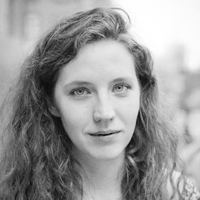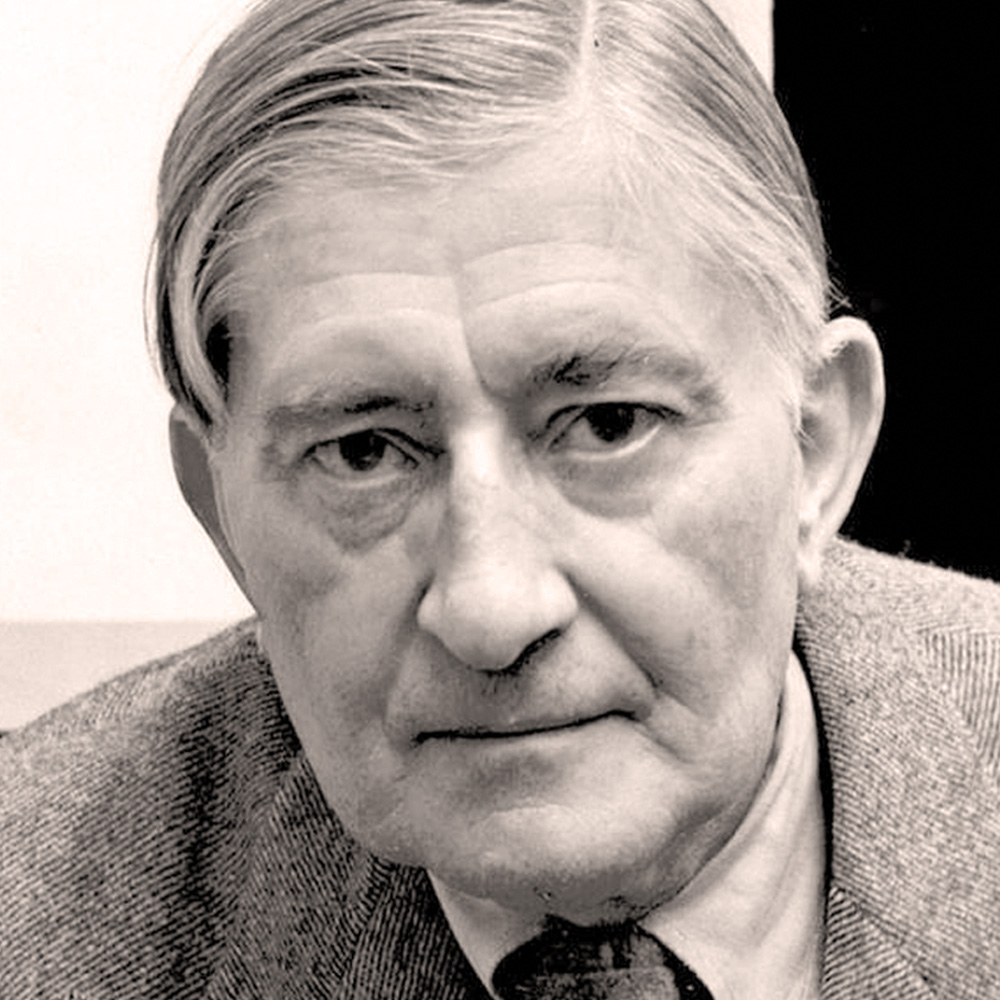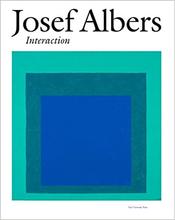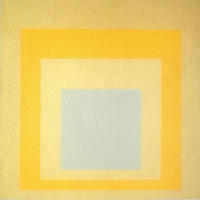More about Josef Albers
- All
- Info
- Shop
Works by Josef Albers

Contributor
Famed artist and educator Josef Albers believed that with a masterful understanding of the different components of art, one could manipulate form, material and color to do one’s bidding.
He’s particularly well known for his work in the field of color theory (and by the way, there’s an app for that). Albers explored and taught the study of color as a purist, examining colors’ relationships to each other rather than their decorative applications. He insisted that colors should “behave; to do what I want, and not what they want.”
That might paint him as a little domineering, but as an art educator he believed in integration of the arts into general study, and commonly related ideas of human respect and care into his aesthetic teachings. Perhaps it’s not surprising that he started off as an elementary school teacher, where he taught little German pipsqueaks everything from science to gym class to how to play nice.
In 1933 (a good time to get away from the Nazis), Josef’s career brought him from Germany to the bustling metropolis of Black Mountain, North Carolina. He had accepted a teaching position at the now-dormant Black Mountain College. The new job was cool, but unfortunately the school had no money, so he and his students had to do what artists do best: be creative. Not enough chairs? Hold class sitting on the floor. No budget for materials? Use found ones, like the brightly colored leaves that surrounded the Appalachian campus. Although the college’s dearth of funding would ultimately force it to close its doors, its scrappy spirit nourished the spontaneity of the artists who studied there.
Josef and wife Anni Albers are a pair of art history’s sweethearts. Once, reflecting on their first meeting (he was an instructor at Germany’s famous Bauhaus school and she a prospective student eleven years his junior), she described him as a “lean, half-starved, ascetic-looking Westphalian with irresistible blonde bangs." Irresistible? Really? These? Although they supported each other’s work and careers for many decades, they never collaborated on any projects except for Christmas cards and Easter eggs.
Featured Content
Here is what Wikipedia says about Josef Albers
Josef Albers (/ˈælbərz/ AL-bərz,
US also /ˈɑːl-/ AHL-,
German: [ˈjoːzɛf ˈʔalbɐs]; March 19, 1888 – March 25, 1976) was a German-born American artist and educator who is considered one of the most influential 20th-century art teachers in the United States. Born in 1888 in Bottrop, Westphalia, Germany, into a Roman Catholic family with a background in craftsmanship, Albers received practical training in diverse skills like engraving glass, plumbing, and wiring during his childhood. He later worked as a schoolteacher from 1908 to 1913 and received his first public commission in 1918 and moved to Munich in 1919.
In 1920, Albers joined the Weimar Bauhaus as a student and became a faculty member in 1922, teaching the principles of handicrafts. With the Bauhaus's move to Dessau in 1925, he was promoted to professor and married Anni Fleischmann, a student at the institution and a textile artist. Albers' work in Dessau included designing furniture and working with glass, collaborating with established artists like Paul Klee. Following the Bauhaus's closure under Nazi orders in 1933, Albers emigrated to the United States, and he taught at the experimental liberal arts institution Black Mountain College in North Carolina until 1949.
At Black Mountain, Albers taught students who would later go on to become prominent artists such as Ruth Asawa and Robert Rauschenberg, and invited contemporary American artists to teach in the summer seminar, including the choreographer Merce Cunningham and Harlem Renaissance painter Jacob Lawrence. In 1950, he left for Yale University to head the design department, contributing significantly to its graphic design program. Albers' teaching methodology, prioritizing practical experience and vision in design, had a profound impact on the development of postwar Western visual art, while his book Interaction of Color, published in 1963, is considered a seminal work on color theory.
In addition to being a teacher, Albers was an active abstract painter and theorist, best known for his series Homage to the Square, in which he explored chromatic interactions with nested squares, meticulously recording the colors used. He also created murals, such as those for the Corning Glass Building and the Time & Life Building in New York City. In 1970, he and his wife lived in Orange, Connecticut, where they continued to work in their private studio. In 1971, Albers was the first living artist to be given a solo show at the Metropolitan Museum of Art in New York. Albers died in his sleep on March 25, 1976, at the Yale New Haven Hospital after being admitted for a possible heart ailment.
Check out the full Wikipedia article about Josef Albers













